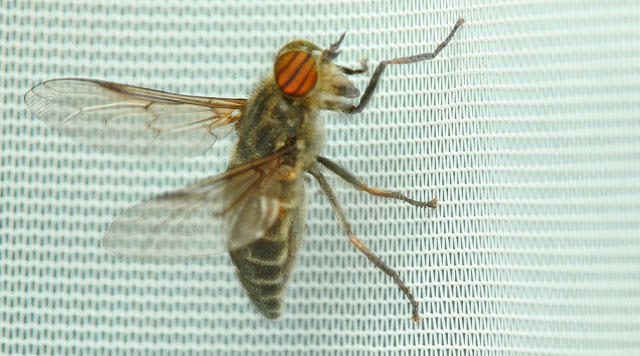Yes, it's true...I fully intended this update to be all about another trip to California. The truth is that I got so bogged down with trying to identify some of the finds from that trip, that I eventually decided to put it on hold, and share something from closer to home instead.
The USA entry will materialise at some point soon though. Meantime, let's take a 'deep dive' into this then shall we!
I was pleased to spot this particular bug, as Miridae (capsid or plant bugs) seem to be in short supply again this year...
 |
I think this one is probably Macrolophus rubi rather than the rarer M. pygmaeus.
I'm not sure which species this Aphid is exactly, but it's kinda funky with those long antennae and wings.
Red-headed Cardinal beetles (which this is) seem to emerge en-masse in my experience. I'd been checking for them and seeing none at all, until the day I came across this one, and at least half a dozen more at the same location.
If I've seen few plant bugs this year, then I've seen fewer still caterpillars. But I can at least identify this one with ease: it's a green one, with two white stripes and some hairs. There, some critters are easier to ID than others, eh?
Next up, a couple of photographs of a quite regal looking Click beetle...
The Speckled-bush cricket nymphs are looking cute as ever this year, and the garden is home to good numbers again...
I'm not entirely sure about this one either; but then I'm not sure about much these days! I don't think it's a mosquito, more likely a midge?
Now this next one is a Dance fly. Don't ask it for a dance though, it's got two left feet...in fact it has three left feet! Where does the name of dance fly come from? I dunno...I'm not the font of all knowledge you know! Actually, I do know the answer.
Oh! You'd like to know: alright then; In mating swarms, males fly up and down in a sort of dance. Often they have captured an insect, wrapped it in silk, and hold it as an offering for females. Females seem to choose the male with the most enticing offering. Ain't that the truth!
And this next fly flew right into the house and landed on the net curtain one day. I think (and you'll have noticed how I so often am not definite in my ID choices, because I am simply an amateur with an interest, not an expert) but I think this particular Horse-fly is most likely Tabanus sudeticus, judging by the markings and darkish appearance. Also known as the Dark giant horsefly or Dark behemothic horsefly (it IS quite large).
Another visitor to the house was this tiny jumping spider. The House Jumping Spider Pseudeuophrys lanigera. I've seen these in the house many times and they are associated with human habitation. It's a 'synanthropic' species in other words. It was actually way back in March that I saw this beauty. I knew I'd get to include it eventually though!
This next photo is my attempt at illustrating just how small this spider actually is. The one on the left is the cropped version of my photograph, and the one on the right is the same spider, but as close to actual size as possible when seen with the naked eye...
And an overhead, or dorsal view...
Time for this now...

Yes! This is most likely the work of Entomophthora muscae. This is a pathogenic fungus which causes a fatal disease in flies. This fungus may affect a number of different species of fly.
It's not a quick death either, the fly will take around a week to die. When it is critically ill, it tends to crawl to a high point, straighten its hind legs and open its wings, a behaviour that ensures that the fungal spores are dispersed as widely as possible
Anyway...this next fly was thankfully very much alive when I photographed it. A female Myathropa florea, unless I am very much mistaken, and, well, let's not even go there!
As above...
Tingis ampliata is next up. It's a Lacebug...
Swiftly followed by Propylea quattuordecimpunctata. A species of Ladybird which if handled, bleeds from its knees: seriously, both of these bizarre facts are true - it does have a name that requires both 29 letters and the memory of an elephant to recall. No need though, because the likes of you and I can just call it by its common name of a 14 spot.
And if you just counted the letters to check, you need to get a life!
Another Mirid bug next: this one is Deraeocoris species...
And another, but this time a little nymph that seems to be Lygocoris species...
Another Speckled-bush cricket nymph, just because I can...
In my local woods, which are looking spectacular now by the way, I found this freshly moulted crab spider...
Here's a closer look at the moult.
On the same walk I saw this acrobatic wolf spider. I'm not sure if it was just going about its business, or hanging on for dear life: it was very windy!

Plecoptera is an order of insects, commonly known as Stoneflies. Although these are associated with rivers and streams, often to be found on riverside stones, hence the common name, I regularly find them quite high up in woodland trees...
This amazingly small creature has all the tell-tale signs of being a Flea beetle. It certainly has the equipment required for jumping judging by those back legs?
Tortoise bugs come in a surprising variety of colour schemes. Well they surprise me at least. They are by comparison with the flea beetle, large shieldbugs, at around 10mm.
Next: is it a beetle, or is it a weevil? Well both actually. Maybe Aspidapion?
I think this one is a pea weevil, and it seems to be eating poo?
Is eating poo preferable to eating each other? Well at least this fly by following on from the poo-eating weevil has an apt name, it's a dung fly.
Is that a good point at which to bring this update to a close? I feel it might be.




.jpg)
.JPG)



























2 comments:
Terrific Blog, JJ! I've missed them! You have such GREAT humour, unexpected and uniquely your own! It had me smiling throughout ;-)) (especially your Surprising ;-)) id of caterpillar) Photos are outstanding and an inspiration as always....Yes, So many treasures here, I might end up listing All of them ;-) but I'll just say WOWW, the "regal" click beetle--indeedy; the dead, fungus-ridden fly---the same fungus as 'my' hoverfly it seems?!!; that other Awesome fly that looks like a wasp sort of---VERY Cool!, the C U T E bush crickets--how sweet they are in your very own garden; the Amazing newly molted crab spider---that side view of face!, and it's empty moult....Oooh, eerie! And Wooow, the behemoth Horse fly! And I have to mention the Wolf spider--Amazing photographic captures of it!! I couldn't decide on your existential question about eating poo, or each other ;-)), but Wow, great capture of both weevils and of the Dung fly with prey!!....OH, and I can't leave out the Dance fly with 3 left feet!! ;-))
I hope this isn't too long ;-)....I'm just pleased as Punch to see you back, that's all. I love the new header too, including GREAT photos and lovely words by Claude Monet...xx
Hi!
Thank-you so much for this enthusiastic, and uplifting comment. I cannot begin to tell you how it helps getting feedback like this. It's great fun writing up and constructing these updates, but is nothing without reaching, and hopefully interacting with folk who read these entries.
It's been a very strange few months for the world, for me in particular, and no doubt you, and everybody else as well. That's what's kept me away. Hopefully things have plateaued now, and normal (whatever that is) service can be resumed.
Thanks again,
Much love,
JJ.
Post a Comment